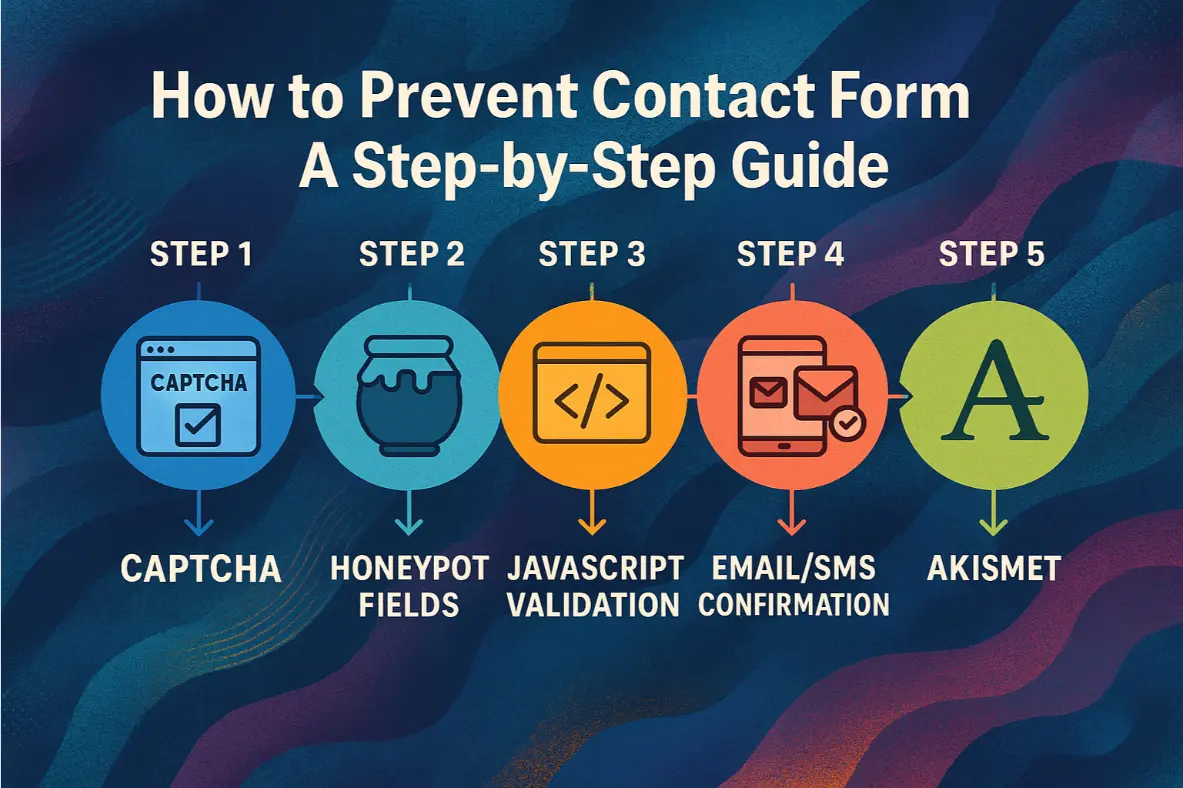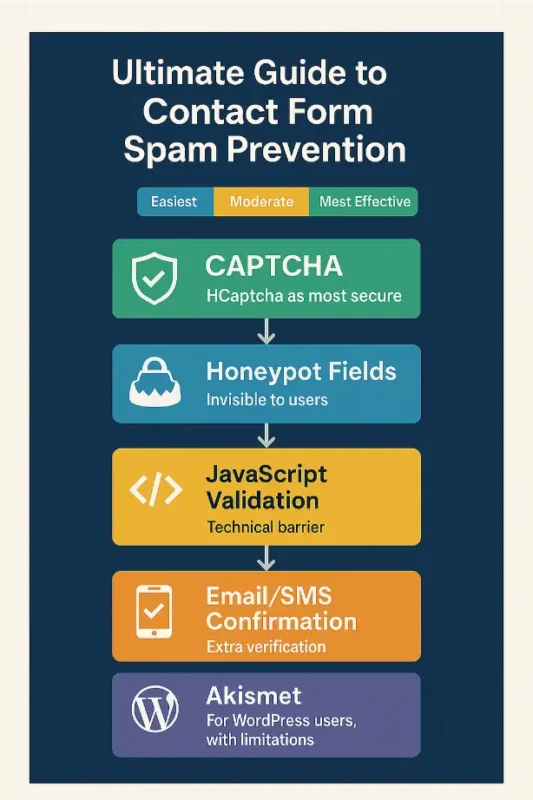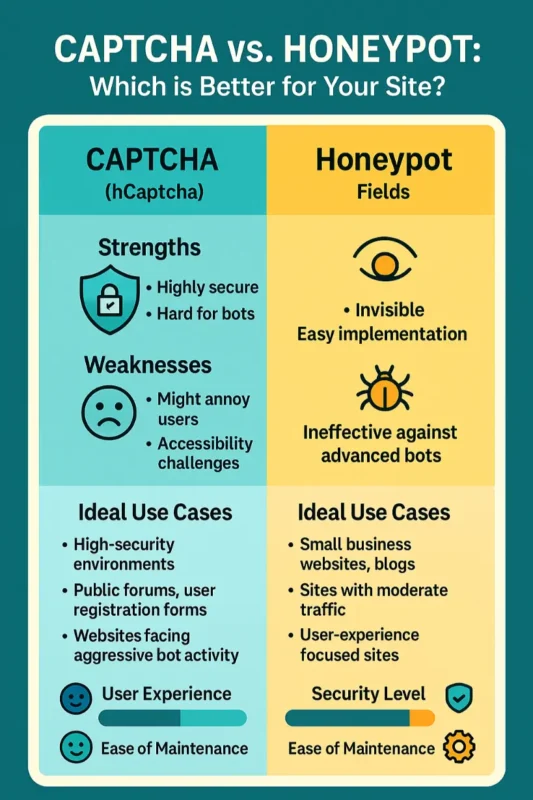How to Prevent Contact Form Spam: A Step-by-Step Guide

If you manage a website, you’re likely familiar with the frustration of receiving spam through your contact forms. Contact form spam isn’t just annoying—it can disrupt your workflow, compromise the security of your website, and clutter your inbox, making it harder to spot genuine leads. Fortunately, there are effective methods to combat this persistent issue. This guide outlines several proven strategies to keep your contact forms spam-free.
Understanding Contact Form Spammy Submissions
Contact form spam occurs when bots or malicious users submit unwanted or harmful messages through your website’s contact form. These messages often include unsolicited promotions, phishing links, or automated irrelevant submissions.
Step-by-Step Methods to Prevent Contact Form Spam

Step 1: Implement CAPTCHA Protection
One of the most widely-used methods to combat form spam is CAPTCHA protection. CAPTCHA differentiates humans from bots by presenting challenges that bots typically fail.
- HCaptcha: This is currently the most effective CAPTCHA solution available, especially as many popular CAPTCHA-breaking bots have stopped supporting HCaptcha due to its complexity and evolving security measures. HCaptcha offers robust security while maintaining user-friendliness.
Implementation:
- Sign up on the HCaptcha website.
- Generate keys and insert them into your form code or plugin.
- Adjust the security level settings according to your preference.
Step 2: Employ a Honeypot Field
A honeypot is an invisible field in your form designed to trap bots. Since bots usually fill in all fields automatically, a filled honeypot indicates a spam submission.
How to Implement a Honeypot:
- Add an invisible field to your form using CSS (display:none).
- If the field is filled during form submission, automatically reject the submission.
Benefits:
- Invisible to users, no friction for genuine visitors.
- Easy to implement and highly effective against simpler spam bots.

Step 3: Use JavaScript to Validate Submissions
Most spam bots don’t execute JavaScript. Incorporating JavaScript-based validation ensures the form can only be successfully submitted if JavaScript runs on the client’s browser.
Implementation Steps:
- Require JavaScript-based validation of input fields.
- Use dynamic form fields or timed submissions to prevent automated submissions.
Step 4: SMS or Email Confirmation
Requiring confirmation via SMS or email is a robust, yet user-intensive method to ensure authenticity.
How to Use SMS/Email Confirmation:
- After form submission, send an SMS or email with a verification code.
- The user inputs the code to complete their submission.
Pros:
- Highly effective at eliminating automated spam.
Cons:
- Can deter genuine users due to additional steps.
Step 5: Utilize Akismet for WordPress
If your website uses WordPress, Akismet can be helpful. However, Akismet is best for comment spam and might mistakenly filter genuine form submissions if the spam message is cleverly spintaxed.
Implementation:
- Install and activate the Akismet plugin.
- Obtain an API key and integrate it into your form handling plugin.
Limitations:
- Potential for false positives, especially with well-spintaxed messages.
Best Practices for Comprehensive Spam Protection
To maximize spam protection, consider combining several of these techniques. For instance:
- Use HCaptcha along with a Honeypot.
- Pair JavaScript validation with occasional email verification for high-value forms.
Implementing multiple layers of protection ensures that if one method is bypassed, others are in place to block unwanted spam.
Continuous Monitoring and Adjustments
No spam prevention system is foolproof forever. Continuously monitor your form submissions and adjust your strategies as spammers evolve their tactics. Regular updates and changes to your spam prevention mechanisms are necessary to maintain effectiveness.
Legal Considerations
Ensure all methods you implement comply with regulations such as GDPR, CCPA, and the CAN-SPAM Act. Form Orbits strictly adheres to these regulations, and your spam prevention methods should too. Always inform users transparently about how their data will be used and protected.

